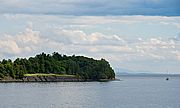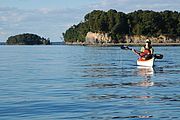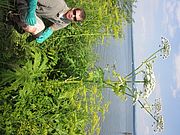The owners of a tugboat that sank on Lake Champlain in 1963, the week before President Kennedy’s assassination, has agreed to begin efforts to remove any residual fuel left on the boat. The tug, an oil tanker, struck Schuyler Reef and sank in waters over 100’ deep. According to an AP report, McAllister Towing and Transportation Co. is negotiating with a Buffalo company to send a diver to the wreck to see if any fuel remains aboard. The expedition had originally been planned for late May, but high lake levels forced a delay. Read...
News from Selected Month
Transmission Developers, Inc. (TDI), a Canadian Company, is continuing to push for an electric power line to be placed on the bottom of Lake Champlain and the Hudson River.
The line would provide energy for the New York City area. TDI has made some changes in their preliminary design so that they would now avoid wetlands in the narrow southern part of Lake Champlain routing the line overland in that stretch. LCC had raised this concern in meetings regarding the project. TDI is currently making its case before the New York Public Service Commission and a joint proposal is anticipated by August 12th. In a recent press release the company touted support from 20 members of the New York State Congressional Delegation including Representative Bill Owens of Plattsburgh. Read...
The 2011 edition of the Lake Champlain Paddlers' Trail Guidebook and Stewardship Manual is out! It’s jam-packed with important information for great adventures on the water including site descriptions and chartlets for 39 Trail locations (with access to over 600 campsites), launch site listings, natural history articles, safety and stewardship tips, equipment check lists and more! - And it's available to all members who renew annually for $40 or more. Click here to make an online donation to ensure you have the guidebook in hand for the rest of this paddling season. Sincere thanks to all the federal, state, and municipal staff and the many volunteers who worked tirelessly to clean up recreation areas and Trail sites and ready them for the season. In June many Trail locations were still under water or affected by the flooding. Without the tremendous effort of many people, we would not have been able to open as many Trail sites this year. Our sincere thanks to all who participated in the clean up. Here’s to happy, safe adventures on the water! Read...
An astute resident found a new population of an invasive species near the ferry dock in Essex, NY. The plant, giant hogweed, is a federally listed noxious weed within the carrot family. Exposure to its sap can cause severe skin irritation, blistering, scarring and even blindness. The plant can grow up to 12 feet in height. Dr. Alan V. Tasker, of the U.S. Department of Agriculture’s National Noxious Weed Program, says people can distinguish giant hogweed from other species of the carrot family, not only by its gargantuan size, but by its purple-splotched, hairy stems. “Cow parsnip stems have a more ‘furry’ look to them, whereas the hogweed has long, white hairs which are most pronounced at the base of the leaf petiole (stem). But the foliage of cow parsnips and giant hogweeds before they send up flower stalks is so similar it’s almost impossible to tell them apart.”
Giant hogweed is a native of the Caucasus Mountain region between the Black and Caspian Seas. It was introduced to Europe and the United Kingdom in the late nineteenth century and to the United States in the early twentieth century as an ornamental garden plant. It has become established in New York, Pennsylvania, Ohio, Maryland, Oregon, Washington, Michigan, Virginia, Vermont, New Hampshire and Maine. Seeds may also be distributed by birds and waterways, and can remain viable for over 10 years.
NY DEC working in collaboration with town officials and The Nature Conservancy began immediate efforts to eradicate the Essex population and prevent its spread. Read...




